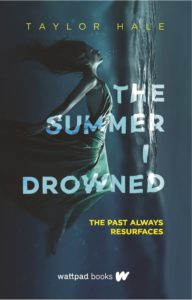Whether it’s the sterile suburban backdrop of the marriage thriller Gone Girl, or the windy seaside town of Broadchurch, the setting of a story helps bring it to life. It can paint imagery that accentuate the themes, providing the foundation in which a protagonist lives their life and fulfills their journey.
Often we hear about how we need to flesh out our characters so they are three-dimensional, vivid, and real—but what about our settings? A powerful piece of advice I’ve heard over the years is to treat your setting like it’s a character. In the genres of mystery and thriller, I find this advice to be particularly important. An atmospheric setting can pull a reader into your world and make them even more compelled by your mystery.
When it comes to deciding on where to set your mystery or thriller, it can help to consider the tone you’re trying to convey. Is it a small town with skeletons in its closet? Or the gritty streets of New York City? What are the locals like—are they highly religious, nosy townsfolk, or busybodies lost in their own worlds? And how does your main character feel in relation to all these things?
Furthermore, where you choose to set your mystery or thriller will have a direct impact on your story. For example, a small town mystery won’t have the full force of the NYPD on its back to help catch a killer—you may be looking at a sheriff or state troopers, people who are more local and less seasoned in the ways of homicide. If your story is a thriller that involves a character needing to escape a villain, the terrain and weather will play a part in that; if the area is heavily forested, they may need to navigate dark and treacherous woods to get to safety. If they’re stranded on an island, they’ll need to find a way to get back to the mainland.
When it comes to mysteries and thrillers, there’s something classic and age-old about the small town setting. Cozy, tight-knight communities can feel so safe and secure—so when something horrific happens there, it’s even more unsettling. The population is smaller, everyone knows each other, and the list of suspects is even more compact. This can create a strong sense of unease, both in the characters and the reader.
There are many examples of the small town mystery in literature. Take Sharp Objects by Gillian Flynn; the podunk, middle of nowhere town of Wind Gap, Missouri creates an eerie backdrop to the startling crimes presented in the novel. Even more interesting, the character is a reporter who used to live there, so coming back into this world with her is even more gripping.
Or in the vein of YA, we have The Darkest Corners by Kara Thomas; Fayette, Pennsylvania, described as a small town where there are “ghosts around every corner,” creates a barren, yet captivating setting for a murder mystery. Oftentimes, places that may seem mundane on the surface become sinister and dark when a mystery is set there, which creates an exciting contrast between the setting and the plot.
Another great way to think about the setting of your novel is to look at audiovisual examples. Take Hawkins, Indiana in Stranger Things. It captures the American small town setting well, and plays up the 80s time period to create a memorable story. While the characters are all unique, but they have the same flavour; they’re all authentically 80s, and they fit perfectly against Hawkins. The locals are believable, and the various mystery elements set throughout the show bring the setting to life. The show always finds a way to have the characters explore different facets of the town, whether it’s an underground lair in a shopping mall, or a grassy hill that overlooks the town.
So how do you decide where to set your story? It can help by thinking about who you want your main character to be. Where we live plays a huge part in who we are—someone from a small town may have less “street smarts” than someone from a big city. Someone from Australia will have grown up in a different world than someone from America. Then think about the tone and vibe you want to give off; the weather, the time of year, the quirks, et cetera.
In my novel The Summer I Drowned, I settled on the fictional town of Caldwell Beach, Maine—a town the main character describes as “a place where fishermen go to die.” It’s a desolate seaside town you must cross through foggy, forested mountains to reach. The coast is lined with jagged cliffs, where there have been several reported drownings over the years. There’s something both beautiful and wicked about a place like this, which I thought perfectly fit the atmosphere I was hoping to convey in The Summer I Drowned. There’s the tranquil peacefulness of a beach town, but mixed with something darker and more sinister. Because places, like people, are multi-faceted and three dimensional. You could even say they have personalities of their own.
Whether you decide on the classic small town setting or a big city, keeping in mind that your setting is as much of a character as your protagonist can help breathe life into your world. Finding ways for your characters to explore that setting even further will help create an irresistible page-turner.
***


















